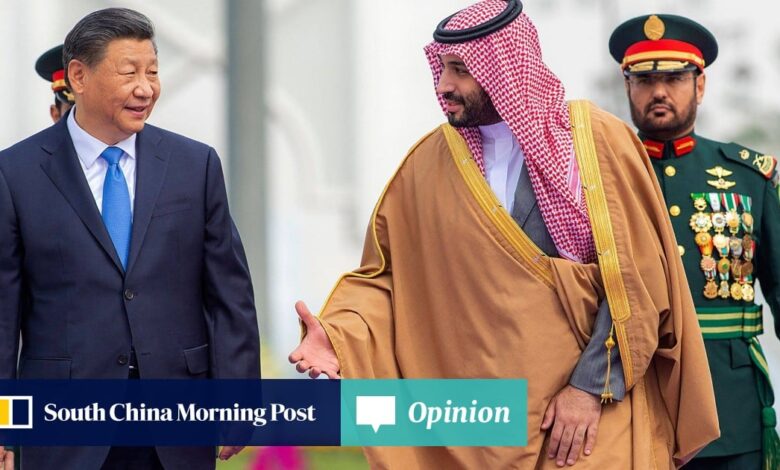Opinion | Can an expanding Brics really offer a persuasive alternative to the US dollar?

[ad_1]

When Iran, Saudi Arabia and the United Arab Emirates join Brics next year, which is also a US presidential election year, we could see steps towards the unravelling of the petrodollar. The summit advocated increased use of members’ national currencies in trade settlements, and the Saudis have already indicated they are open to accepting non-US-dollar settlements for oil.
With nearly all the major oil producers being members of the expanded Brics, their influence on the Organisation of Petroleum Exporting Countries Plus would be felt.
But what is de-dollarisation? While it is an attack on the US dollar, which Russian President Vladimir Putin has accused Washington of weaponising, there is more to it. First, it means increased use of the renminbi, the rouble, the rupee and other members’ currencies.
Second, a distinction can be drawn between an overnight collapse of the petrodollar and the incremental undermining and dilution of the use, relevance and power of the US dollar, which will take some years. While there has been talk of a Brics currency, the details are unclear.
Third, de-dollarisation is a repudiation of the Keynesian theories of currency creation embraced by the US since 1971 when it abandoned the gold standard, under which the dollar’s value was pegged to gold.
The prerogative to create vast amounts of US dollar digital currency at will is partly the result of its global reserve status that requires it to be freely available (now contravened due to its weaponisation), but mainly due to the need to cushion the US economy.
Unbridled US dollar creation debases the currency and exports inflation to others. That’s what US Treasury secretary John Connolly meant in 1971, after the US abandoned the gold standard, when he told his European counterparts that, “The dollar is our currency but it’s your problem.”
The depth of US capital markets and their pervasive influence – benign or otherwise – will not vanish overnight. The US capital pool cannot be drained by pulling the plug. But it can be made less attractive by offering a persuasive alternative.
Only the US itself can trigger a dollar collapse via hubris, overreaching and miscalculation. What is unclear is how the yuan, rouble and rupee could protect themselves in the interim against a rising dollar.
Some US states have begun accepting gold as legal tender. Gold could re-emerge as the basis of a new Asian-directed financial architecture in the expanded Brics.
If the new Brics currency is linked to gold, the weighting of the original Brics currencies in relation to gold, how that weighting is to be adjusted as they increase their gold reserves, and whether gold will be physically redeemable or an accounting entry in trade settlement, will need to be thought through.
A Brics currency may look attractive to the Global South, but US unipolar hegemony cannot simply be replaced with bipolar directives from Beijing and Moscow, while India remains a dissenting party, as the summit discovered.
Sanjeev Aaron Williams is a lawyer in Hong Kong who writes about geopolitics and digital economy
[ad_2]
Source link





